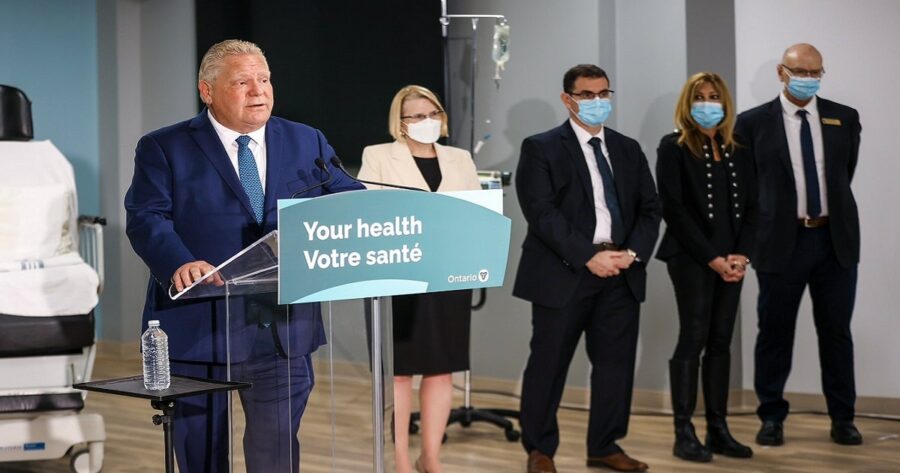Ontario Government Will Send More Healthcare Services To Private Companies
- Ingrid Jones
- Eastern Canada
- Trending
- January 17, 2023

200,000 out of 209,000 people waiting for surgical procedures pre-date the COVID-19 pandemic
Ontario, like many other provinces in Canada, has struggled with long wait times for certain medical procedures, such as M.R.I. and CT imaging, endoscopies and colonoscopies. To address this issue, the government has been looking at ways to increase the capacity of the healthcare system, including contracting out some of these services to private corporations.
“When it comes to your health, the status quo is no longer acceptable,” said Premier Doug Ford. “Our government is taking bold action to reduce wait times for surgeries, all while ensuring Ontarians use their OHIP card to get the care they need, never their credit card.”
According to the Ontario government, they plan to spend “$300 million in 2022/23 as part of the surgical recovery strategy to increase scheduled surgeries and procedures, as well as appropriate diagnostic imaging services with a focus on areas with the greatest reduction in services due to the COVID-19 pandemic.”
One of the main arguments in favour of contracting out these services is that it can help reduce wait times for patients. By allowing private companies to provide these services, the government can increase the overall capacity of the healthcare system and provide more timely access to care for patients. This can be especially beneficial for patients who are in need of urgent care or have been waiting for a long time for a procedure.
Another argument in favour of contracting out these services is that it can help to reduce costs for the healthcare system. By allowing private companies to provide these services, the government can save money on the costs of building and maintaining facilities and equipment. Additionally, private companies may be able to provide these services more efficiently than the public healthcare system, which can also help to reduce costs.
However, there are also some arguments against contracting out these services. One concern is that it could create a two-tier healthcare system, where patients who can afford to pay for private services will receive faster and better care than those who rely on the public healthcare system. This could exacerbate existing inequalities in the healthcare system and lead to further disparities in health outcomes.
Another concern is that contracting out these services could lead to a decline in the quality of care provided by the public healthcare system. If private companies are primarily focused on making a profit, they may be less motivated to provide high-quality care and more focused on providing services quickly and cheaply. This could lead to lower standards of care for patients in the public healthcare system.
In addition, contracting out these services could also lead to backlogs if the private companies fail to meet the demand of the patients or fail to provide the services with the same level of quality as the public healthcare system; this could lead to more patients seeking help from the public system, causing an increase in the wait times.
If this happens, it will only further put a healthcare system in total overload, considering it is already at its breaking point. And the fact that about 200,000 out of 209,000 people waiting for surgical procedures pre-date the pandemic is malpractice.
Ultimately, careful consideration and planning will be necessary to ensure that any decisions to contract out these services are made in the best interests of patients and the healthcare system as a whole. It also confirms the dire state of healthcare in Ontario.








